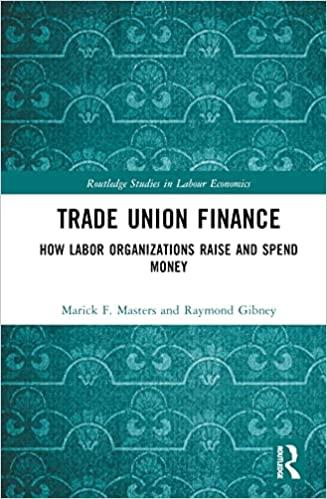Question
4. Suppose you are given the following information about the default-free bond prices. Note that first 3 bonds are zero-coupon bonds and last two are
4.
Suppose you are given the following information about the default-free bond prices. Note that first 3 bonds are zero-coupon bonds and last two are coupon bonds with annual coupon amount in the table.
| Bond Principal($) | Time to maturity (years) | Annual Coupon | Bond Price($) |
| 100 | 1 | 0 | 97.5 |
| 100 | 2 | 0 | 94.9 |
| 100 | 3 | 0 | 90 |
| 100 | 4 | 3 | 96 |
| 100 | 5 | 5 | 101.6 |
a) Use formula and arbitrage to determine the zero-coupon yield curve for years 1 through 5. Plot the yield curve.
b) Compute the yield to maturity of each 5 bonds.
5.
Suppose you purchase a 30-year, zero-coupon bond with a yield to maturity of 6%. You hold the bond for five years before selling it.
a) If the bonds yield to maturity is 6% when you sell it, what is the internal rate of return of your investment?
b) If the bonds yield to maturity is 7% when you sell it, what is the internal rate of return of your investment?
c) If the bonds yield to maturity is 5% when you sell it, what is the internal rate of return of your investment?
d) Even if a bond has no chance of default, is your investment risk free if you plan to sell it before it matures? Explain.
Show all intermediate processes and calculation in Excel cell.
Make timeline and cashflow table as clear as possible. This will help you to get partial credits.
Excel file should be submitted.
Note: this is a timed quiz.
Step by Step Solution
There are 3 Steps involved in it
Step: 1

Get Instant Access to Expert-Tailored Solutions
See step-by-step solutions with expert insights and AI powered tools for academic success
Step: 2

Step: 3

Ace Your Homework with AI
Get the answers you need in no time with our AI-driven, step-by-step assistance
Get Started


